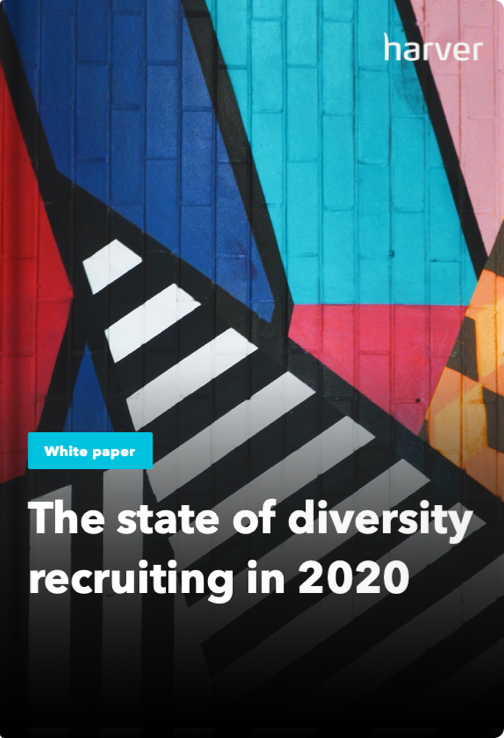Hiring velocity is a key talent acquisition metric that you’ll want to track. It isn’t necessarily a metric that your TA team needs to keep on top of. It’s more one for the C-suite to keep tabs on, because hiring velocity correlates directly with business effectiveness.
Contrary to popular belief, hiring velocity IS NOT the same as the time to hire. While time is a factor in this calculation, velocity is, after all, a measurement of change in position over the change in time. In this case, the velocity you’re measuring is a report on the number of openings you have vs the number of fills you’ve achieved in a set time frame.
Why is hiring velocity an important metric to track? Because it is a solid team production metric and one that yields meaningful recruitment data – it shows you how efficient your hiring process is – are you meeting hiring demand? Exceeding hiring demand? Falling short?
By improving hiring velocity, you can improve your overall recruitment efficiency. But hiring velocity is often incorrectly understood and measured, which is why we’re going to explore what it is, how to measure it, and recommend some ways to improve it.
What’s in?
What is hiring velocity
Hiring velocity, in layman’s terms, is quite simply, the speed and direction of hiring, over a set time period, or the number of positions opened vs. the number of hires over a defined period of time.
For example, if you’ve opened 10 positions in a week, and you’ve filled 15 positions, your hiring velocity is +5. As you can see, this number doesn’t take the account the positions that were already open in your inventory, so your hiring velocity is not dependent on your current requisition inventory.
As a minimum in a year, you want to fill as many positions as you have opened:
- If you don’t meet this number, you’ll lose ground while your hiring inventory continues to grow.
- If you exceed this number, that’s a good thing, because you’re not just keeping up with demand, you’re actively reducing your hiring inventory.
Why does the C-suite love this metric? Because it represents your ability to meet your hiring demand, allowing them to create a more accurate and cost-effective recruitment plan.
Hiring velocity vs time to hire
We mentioned above that hiring velocity is not the same as time to hire, and that’s because they’re measuring two very different things.
- When tracking hiring velocity, you’re not measuring particular hires, you’re measuring your directional hiring force in a set time period; essentially you’re checking to see if you’re meeting hiring demand.
- When tracking time to hire, you’re measuring the time it takes to fill a position. When you’re measuring time to hire, you’re calculating the time it takes to get from candidate sourcing to candidate accepting your job offer.
Just because they both deal with speed, it doesn’t make them the same metric.
How to measure hiring velocity
It’s really quite easy to measure your hiring velocity, you don’t need to be a math whizz. For example, if you have 5,200 openings to fill this year, with a current opening inventory of 100, your TA team has to fill 5,200 openings.
To make sure you’re meeting your weekly hiring goals, divide the number of openings you have to fill this year, in this example that’s 5,200, by 52 – which gives a goal of 100 weekly hires. If you fill your 100 openings this week, you’re on track to meet your 5,200 annual goal.
One point to note: if you hire at scale, then this manual approach is wholly inefficient. It only makes sense to go down this route if you’re hiring small numbers of people. To calculate hiring velocity when you’re hiring at scale, you’re going to need technology to assist you.
Like what you see?
Don’t miss out. Subscribe to our quarterly digest to get the latest TA and TM resources delivered right to your inbox.
How to improve hiring velocity
How can you improve your hiring velocity? This is basically, how can you improve your hiring process, full stop.
If you want to meet your hiring demand, you need to get back to basics and think about your current hiring practices. Because if you’re still relying on old, outdated methods of recruitment that has your TA team manually carry out tedious, repetitive tasks, you’re not going to see any improvement in your hiring velocity.
If you’ve yet to undergo a digital transformation in your recruitment process, then now’s the time to consider doing it. By adopting technology, you can automate the majority of your hiring processes, making them more efficient, and improving your hiring velocity when carrying out volume recruitment.
1. Write better job descriptions
It takes just 49.7 seconds for a job seeker to read and dismiss your job advert because they don’t see themselves as a good fit.
Having a diverse workforce benefits everyone. From improving the team’s output to increasing the organization’s bottom line. So how do you get people who might not ordinarily see themselves as a good fit, to apply for your roles?
It all starts with crafting the best job description you can. Here’s how:
- Write for your audience. If your target audience speaks a different language, don’t just translate your job description, incorporate localization into your phrasing. This takes into account the social and cultural aspects of the people you’re hoping to recruit. For example, Portuguese in Portugal isn’t the same Portuguese spoken in Brazil.
- Don’t use gendered language. Want to instantly improve application rates by up to 50%? Don’t write a job description that turns off 50+% of the population. Gender binary is incredibly prevalent in society, and one of the easiest ways to overcome gender bias in your job descriptions is to remove all references to gender. Instead of talking about your ideal candidate in the third-person pronouns “he” or “she” simply talk in the second person and use the catch-all “you”. If you’re not sure how to degender your language, use a tool such as Gender Decoder to help you remove bias from your job description, and make it more widely appealing.
- Keep it short and sweet. You aren’t writing War and Peace here, you’re writing a job description. Don’t alienate potential applicants by trying to be clever in your choice of language. Literacy inclusion is a thing, and by writing job adverts using complicated language, you’re running the risk of being ageist – our literacy levels typically improve as we age. Keep sentences and paragraphs short, use simple, easy-to-understand words, and generally make your job description as readable as possible. Use tools such as Hemingway Editor or Grammarly to help you.
- Don’t use jargon. With the increased number of job seekers looking for work, potentially coming from other sectors, if you write jargon-heavy job descriptions, you risk putting people from outside your industry off applying, even if they have the requisite transferable skills. Don’t use jargon, it’s not necessary nor inclusive.
The state of diversity recruiting in 2020
2. Optimize your sourcing based on data
When you’re trying to improve your hiring velocity, determining which of your recruitment channels yields the highest quality candidates is key. Once you’ve figured out where your best talent is sourced, you can focus your efforts (and budget) there.
But what data do you need to capture in order to optimize your sourcing?
Traditionally, most recruiters tend to throw money at the source that yields the most applicants, but when you’re looking to improve your hiring velocity, that means filling a role and keeping it filled. You don’t want to contribute to a rising employee attrition rate by hiring the wrong candidates.
Track sourcing data such as:
- What percentage of your candidate pool came from which source?
- What are your hiring rates for each source?
- Where are most of your high-quality candidates sourced?
- Are the top candidates applying via mobile phone? From a QR code? At home?
- Is there a source where the most number of candidate dropouts come from?
Note: The Harver platform offers a suite of recruitment dashboards that allow you to easily analyze your sourcing data, so you can take a data-driven approach to optimizing your talent pool. We’ve covered the topic in the article below.
3. Automate the process
Want to improve hiring velocity? Then increase hiring efficiency through automation.
In reality, the only stages of your hiring process that can’t be carried out automatically are the interview and the hiring decision. Saying that, both of these can be augmented by technology.

Why is automation the answer to improving hiring velocity?
Think about where the bottlenecks are in the typical recruitment process, those key spots that hold your hiring velocity back – resume screening, assessing candidates, even scheduling interviews. When you have recruiters tied up with these tedious, time-consuming tasks, it slows the whole process down, reducing hiring velocity. Not to mention you run the risk of losing the best candidates and having to start the process over again.
Automating stage progression moves candidates through the funnel quickly and assesses them efficiently. It requires you to initially set certain benchmarks that applicants have to reach in order to move along your recruitment funnel, but once established, your recruitment process can run without the need for any manual review.
We’ve detailed the process in the article below.
4. Enable candidates to self-schedule interviews
To reduce the time to hire and improve hiring velocity, allow successful candidates to self-schedule interviews. This eliminates the need to go back and forth with interviewers, trying to find a time that suits both parties. Manual interview scheduling introduces delays into the process, slowing everything down.
By simply giving successful applicants who meet your benchmarks a link the option to self-schedule an interview, not only are you empowering applicants by letting them arrange a time that suits them, you’re also moving the process along, smoothly and quickly.
If you’d like to see this functionality in action in the Harver platform, you can book a demo below.
If you’d like to see how Haver can transform your hiring process,
book a demo here!
5. Track and measure it automatically
How do you know if you’re improving your hiring velocity if you aren’t tracking and measuring it?
In order to check, at a glance, what your hiring velocity is, you want to be able to easily access the number as and when you need it. This means having a streamlined data collection and analysis strategy as well as the right dashboards in place, for easily visualizing data.
We’ve already touched upon the topic above, so make sure to check our dedicated article if you want to learn more about this topic: Measuring Talent Acquisition – 4 Dashboards for Better Visibility into Your Recruitment Performance.
Next steps
Using these five suggestions will help your hiring velocity, but ultimately, the best way to improve it and help improve your recruitment process is by measuring the outcomes of your recruitment efforts, and that all boils down to capturing, measuring, analyzing and understanding the necessary data that will help you stay agile and stay ahead.
If you’d like to see how Harver can support you, you can book a demo below.
Ready to transform your hiring process?



